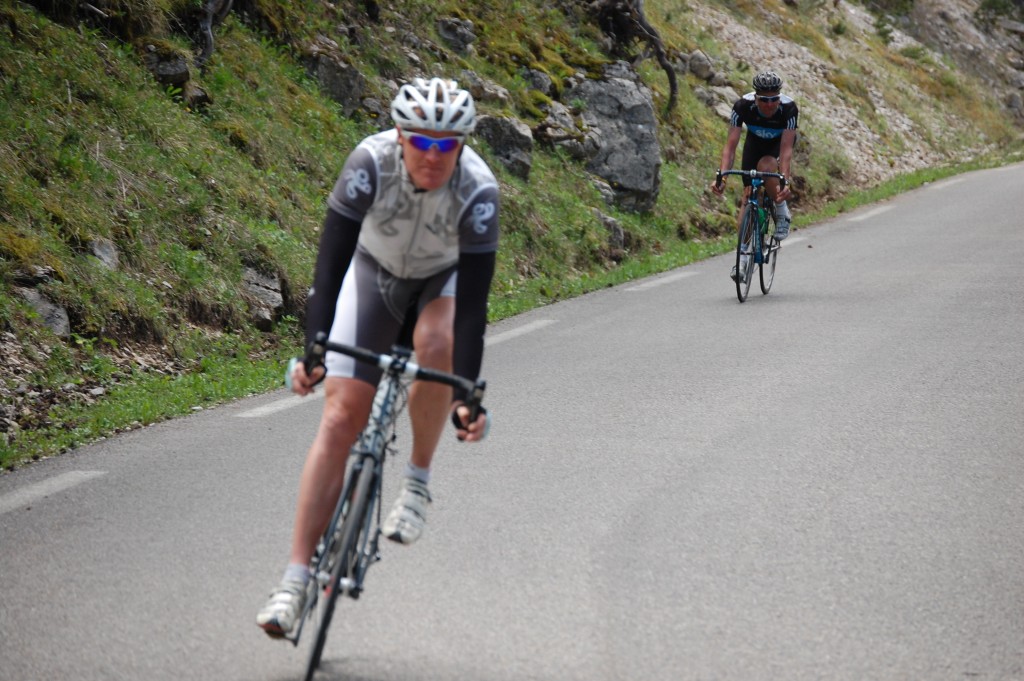-
How to: Descending on the bike
- Posted onjofrancis
- in Uncategorized
- onApril 18, 2019
- No Comments.
Climbing on the bike is hard – which should in turn mean that descending is a real joy but in actual fact it can be quite intimidating for some athletes. Put together the combination of speed, that slight out of control feeling, some twists and turns and the downhill prospect becomes quite a daunting one, for athletes at all levels.
So how can you learn to love the “downs” and be safe at the same time:
Focus on your technique. A low centre of gravity means a more stable bike. So, keep your body relaxed, with your hands on the drops and one or two fingers on the brakes. This is the most stable and safe position to be in – low with your brakes covered. Some novice cyclists may be daunted at first descending on their drops. If this is you then of course begin to practice on your hoods but lower your body (rather than sit bolt upright) to make you as stable as possible. Be aware that if you are on your hoods your purchase on the brakes may be compromised.
Think about your weight! As triathletes we are often thinking about our weight – this time I mean your weight distribution! Unless you are a Tour de France cyclist my advice would be to maintain your weight evenly distributed between your wheels. Novice cyclists may feel more stable with their weight shifted a little back on the saddle and more over the back wheel.
Keep it controlled. You really don’t need to go full force down the hill, particularly if you are still a novice. Keep control over your speed, braking early and effectively as you head into bends and corners, and releasing the brakes so that you can smoothly continue as you go through the corner.
Ensure you’re familiar with your brakes! Sounds silly but you need to know the effectiveness of your front and rear brakes and what happens when you grab a full handful of brake and what happens when you merely give a light touch… It’s important to have confidence in your braking so that if you have amassed some speed and need to slow things down quite rapidly, you’re not then hit with the fear that you’re somehow going to go flying off over the handlebars! Also, try not to keep your brakes on slightly for the whole descent, this can feel like a safety measure but can actually cause your brakes to overheat and not be as effective when you actually need them!
Think and look more. The faster you’re travelling; the faster things happen… Cars pulling out, other riders pulling into your line, potholes, speed bumps, gravel etc. You need to ensure that you’re ahead of the game – keep your head up, look further ahead, give parked cars and other riders a wider berth, anticipate what may be coming up.
Practice, practice, practice. As with all elements of triathlon training, the more familiar you are with doing something, the more comfortable and confident you will become. Pick a local hill and attack it over and over again, you’ll soon start to see changes in how you handle it and these can then be applied to an unfamiliar hill when the time comes.
If you enjoyed this article please consider sharing it!





